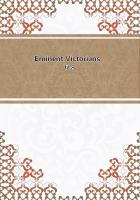Printing.Let no one mistake:architecture is dead—dead beyond recall,killed by the printed book,killed because it is less durable,killed because it is more costly.Every Cathedral represents a million.Imagine now the sums necessary for the rewriting of that architectural tome;for those countless edifices to spread once more over the land;to return to the days when their abundance was such that from the testimony of an eye-witness'you would have thought that the world had cast off its old raiment and clad itself anew in a white raiment of churches.'Erat enim ut si mundus,ipse excutiendo semet,rejecta vetustate,candidam ecclesiarum vestem indueret.(Glaber Rudolphus.)
A book takes so little time in the ******,costs so little,and can reach so far.What wonder that human thought should choose that path?Though this is not to say that architecture will not,from time to time,put forth some splendid monument,some isolated master-piece.There is no reason why,under the reign of printing,we should not,some time or other,have an obelisk constructed,say,by an entire army out of melted cannon,as,under the reign of architecture,we had the Iliads,the Romants,the Mahabahratas,and the Nibelungen,built by whole nations with the welded fragments of a thousand epics.The great good fortune of possessing an architect of genius may befall the twentieth century,as Dante came to the thirteenth.But architecture will never again be the social,the collective,the dominant art.The great epic,the great monument,the great masterpiece of mankind will never again be built;it will be printed.
And even if,by some fortuitous accident,architecture should revive,she will never again be mistress.She will have to submit to those laws which she once imposed upon literature.The respective positions of the two arts will be reversed.Certainly,under the reign of architecture,the poems—rare,true—resemble the monuments of the time.The Indian Vyasa is strange,variegated,unfathomable,like the native pagoda.In Egypt the poetry shares the grand and tranquil lines of the edifices;in ancient Greece it has their beauty,serenity,and calm;in Christian Europe,the majesty of the Church,the simplicity of the people,the rich and luxuriant vegetation of a period of rebirth.The Bible corresponds to the Pyramids,the Iliad to the Parthenon,Homer to Phidias.Dante in the thirteenth century is the last Romanesque church;Shakespeare in the sixteenth,the last Gothic minster.
Thus,to put it shortly,mankind has two books,two registers,two testaments:Architecture and Printing;the Bible of stone and the Bible of paper.Doubtless,in contemplating these two Bibles,spread open wide through the centuries,one is fain to regret the visible majesty of the granite writing,those gigantic alphabets in the shape of colonnades,porches,and obelisks;these mountains,as it were,the work of man's hand spread over the whole world and filling the past,from the pyramid to the steeple,from Cheops to Strassburg.The past should be read in these marble pages;the books written by architecture can be read and reread,with never-diminishing interest;but one cannot deny the grandeur of the edifice which printing has raised in its turn.
That edifice is colossal.I do not know what statistician it was who calculated that by piling one upon another all the volumes issued from the press since Gutenberg,you would bridge the space between the earth and the moon—but it is not to that kind of greatness we allude.Nevertheless,if we try to form a collective picture of the combined results of printing down to our own times,does it not appear as a huge structure,having the whole world for foundation,and the whole human race for its ceaselessly active workmen,and whose pinnacles tower up into the impenetrable mist of the future?It is the swarming ant-hill of intellectual forces;the hive to which all the golden-winged messengers of the imagination return,laden with honey.This prodigious edifice has a thousand storeys,and remains forever incomplete.The press,that giant engine,incessantly absorbing all the intellectual forces of society,disgorges,as incessantly,new materials for its work.The entire human race is on the scaffolding;every mind is a mason.Even the humblest can fill up a gap,or lay another brick.Each day another layer is put on.Independently of the individual contribution,there are certain collective donations.The eighteenth century presents the Encyclopedia,the Revolution the Moniteur.Undoubtedly this,too,is a structure,growing and piling itself up in endless spiral lines;here,too,there is confusion of tongues,incessant activity,indefatigable labour,a furious contest between the whole of mankind,an ark of refuge for the intelligence against another deluge,against another influx of barbarism.
It is the second Tower of Babel.















